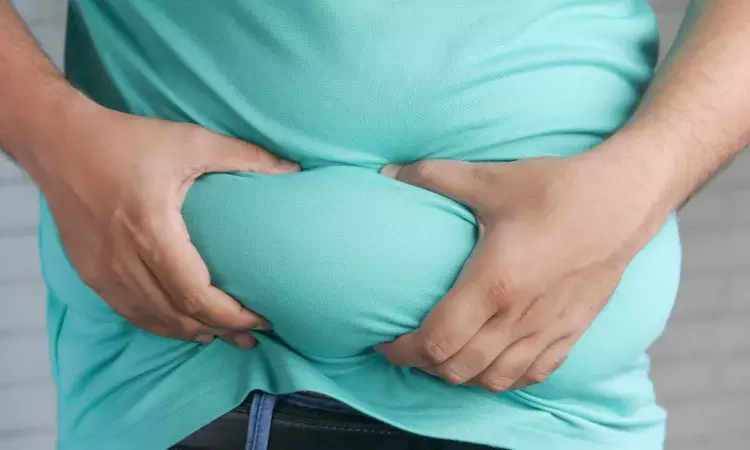- Home
- Medical news & Guidelines
- Anesthesiology
- Cardiology and CTVS
- Critical Care
- Dentistry
- Dermatology
- Diabetes and Endocrinology
- ENT
- Gastroenterology
- Medicine
- Nephrology
- Neurology
- Obstretics-Gynaecology
- Oncology
- Ophthalmology
- Orthopaedics
- Pediatrics-Neonatology
- Psychiatry
- Pulmonology
- Radiology
- Surgery
- Urology
- Laboratory Medicine
- Diet
- Nursing
- Paramedical
- Physiotherapy
- Health news
- Fact Check
- Bone Health Fact Check
- Brain Health Fact Check
- Cancer Related Fact Check
- Child Care Fact Check
- Dental and oral health fact check
- Diabetes and metabolic health fact check
- Diet and Nutrition Fact Check
- Eye and ENT Care Fact Check
- Fitness fact check
- Gut health fact check
- Heart health fact check
- Kidney health fact check
- Medical education fact check
- Men's health fact check
- Respiratory fact check
- Skin and hair care fact check
- Vaccine and Immunization fact check
- Women's health fact check
- AYUSH
- State News
- Andaman and Nicobar Islands
- Andhra Pradesh
- Arunachal Pradesh
- Assam
- Bihar
- Chandigarh
- Chattisgarh
- Dadra and Nagar Haveli
- Daman and Diu
- Delhi
- Goa
- Gujarat
- Haryana
- Himachal Pradesh
- Jammu & Kashmir
- Jharkhand
- Karnataka
- Kerala
- Ladakh
- Lakshadweep
- Madhya Pradesh
- Maharashtra
- Manipur
- Meghalaya
- Mizoram
- Nagaland
- Odisha
- Puducherry
- Punjab
- Rajasthan
- Sikkim
- Tamil Nadu
- Telangana
- Tripura
- Uttar Pradesh
- Uttrakhand
- West Bengal
- Medical Education
- Industry
Lipid Accumulation Product strongest Predictor of Diabetes Among Visceral Obesity Indices: Study

China: A new prospective cohort study from China has provided fresh insights into the link between visceral obesity and the future risk of developing diabetes mellitus (DM). Conducted by Dr. Yue Zhang and colleagues from the People's Liberation Army Medical School in Beijing, the research highlights the clinical significance of various visceral fat markers and positions the Lipid Accumulation Product (LAP) as the most powerful predictor of diabetes onset.
Published in Diabetes, Obesity and Metabolism, the study involved 6,575 participants aged 40 years and older who were free from diabetes at the beginning of the study. These individuals were followed over an average period of 3.19 years, during which their metabolic health was monitored. For the follow-up, 752 participants (11.4%) developed diabetes.
To assess the relationship between visceral fat and diabetes risk, the researchers examined five specific visceral obesity indices: waist-to-height ratio (WHtR), body roundness index (BRI), visceral adiposity index (VAI), abdominal body shape index (ABSI), and LAP. These indices were analyzed using multivariable-adjusted Cox proportional hazards models. Additionally, restricted cubic spline (RCS) models were used to evaluate dose-response relationships, and ROC curve analysis was conducted to assess the predictive accuracy of each index.
Key findings from the study include:
- All five visceral obesity indices were significantly associated with an elevated risk of developing diabetes, independent of other risk factors.
- LAP showed the strongest predictive value among all the indices assessed.
- The hazard ratio for LAP was 2.93, indicating that individuals with high LAP levels had nearly three times the risk of developing diabetes compared to those with lower values.
- RCS analysis revealed a nonlinear dose-response relationship between these indices and diabetes risk, suggesting a complex link between fat distribution and disease progression.
- Stratified and sensitivity analyses demonstrated the consistent predictive strength of LAP across various population subgroups.
- ROC curve analysis showed LAP had the highest predictive accuracy, with an area under the curve (AUC) of 0.752, reflecting a strong ability to identify high-risk individuals.
The study emphasizes the pivotal role of visceral fat in the pathogenesis of diabetes. It encourages healthcare professionals to consider visceral obesity indices, particularly LAP, when evaluating metabolic risk.
“The study reinforces the link between excess visceral fat and the onset of diabetes,” the authors noted. “It presents LAP as a simple and powerful tool for early identification of at-risk individuals, paving the way for more targeted prevention strategies to reduce visceral fat and mitigate the diabetes burden.”
Reference: https://doi.org/10.1111/dom.16492
Dr Kamal Kant Kohli-MBBS, DTCD- a chest specialist with more than 30 years of practice and a flair for writing clinical articles, Dr Kamal Kant Kohli joined Medical Dialogues as a Chief Editor of Medical News. Besides writing articles, as an editor, he proofreads and verifies all the medical content published on Medical Dialogues including those coming from journals, studies,medical conferences,guidelines etc. Email: drkohli@medicaldialogues.in. Contact no. 011-43720751


